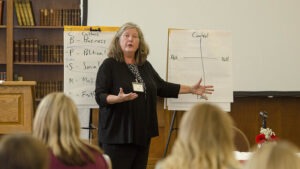Toolkit Overview

Our toolkit is designed to help facilitate a student-centered classroom in which students view themselves as capable, independent learners. We wanted our students to take ownership of their own learning and view the instructor as a resource rather than a “dispenser of knowledge.” In our toolkit you will find a rubric intended to grade processes more than answers, several tasks that we used in our classrooms, and some articles we used to get students thinking about mindset. Together these tools provide a framework for creating a new classroom culture.
When students strengthen their ability to persist, to clearly communicate their thinking, and to work together in a setting that fosters collaboration, they develop qualities that are valued in both academic and career settings. When students understand that they have the ability to solve challenging problems in mathematics, they become successful learners across the curriculum. They will be more successful in all their classes as they have developed the skills to succeed in life as well as in math class.
Resources Used to Inform this Toolkit
Most of our research was focused on ways to support deep conceptual understanding of mathematics. We included work by Jackie Lubin, Dvora Pewretz, and Peter Rillera and Helen Padgett. We also used Jo Boaler and Carol Dweck’s work on community building and the “Week of Inspirational Math”. Doyle provided the “Levels of Cognitive Demand” article which we used to help students differentiate between memorizing math and doing math. Angela Duckworth’s work on Grit was used as one of our measurement tools.
Key Lessons Learned
We do believe that the interventions we made are positively changing our classrooms; students seem to be developing more confidence and independence, but the formal data is inconclusive. One of our challenges to measuring this particular change included questioning whether our assessment tools were measuring what we wanted: perception about perseverance vs actual ability to persevere. We also questioned the impact of other factors such as attendance, academic history, etc. We hope to survey students after the course is over to see if their perceptions change once the stress of grades, final exams, and the end of the term is reduced.
Comprehensive Guide to Utilizing Our Tool in Your Classroom

